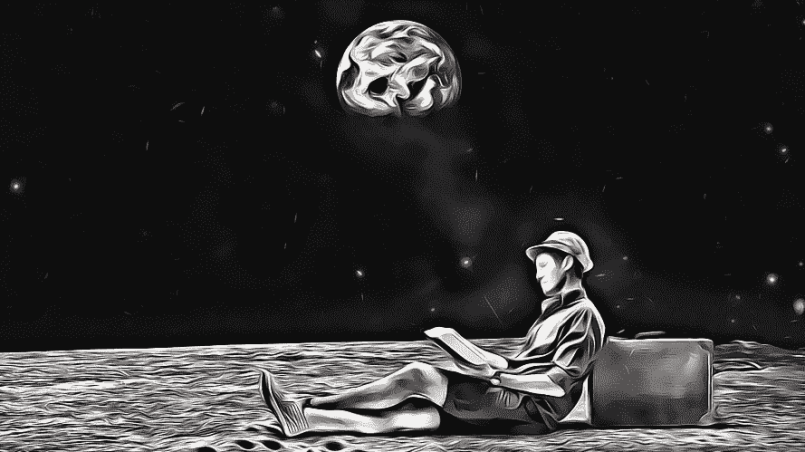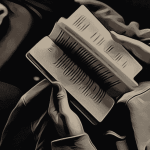1. “Big Magic: Creative Living Beyond Fear” by Elizabeth Gilbert
Summary:
In Big Magic, Elizabeth Gilbert discusses the power and magic of creativity. She invites readers to engage in creativity without fear, self-doubt, or perfectionism. The overriding theme is that creativity is an inherent, boundless force accessible to all, but the fear of failure tends to hold people back. Gilbert explains how to engage in creative work with curiosity instead of pressure, and how to take risks while being okay with not all creative pursuits working out. She stresses that creativity is a lifestyle, not a hobby or career. The book is full of personal anecdotes, observations, and down-to-earth tips on living a creative life, embracing failure, and letting creative magic happen without resistance.
Key Takeaways:
- Creativity is not a special gift for the selected few—it’s for all.
- Fear often blocks creativity, but it’s possible to act despite fear.
- Follow your curiosity, not your passion. Curiosity is a reliable guide to creative fulfillment.
- Do not strive for perfection; allow your process to be free and experimental.
- You cannot wait for inspiration to come to you—you must produce even when you are not inspired.
2. “Steal Like an Artist: 10 Things Nobody Told You About Being Creative” by Austin Kleon
Summary:
In Steal Like an Artist, Austin Kleon puts forth the notion that all creative work is derivative and that borrowing from others is natural and healthy in the creative process. According to Kleon, creativity is not about coming up with something completely original but remixing and reinterpreting what is already present. The book provides practical advice to would-be artists, writers, and creatives to get inspired by the world, borrow from their influences, and add their own spin to ideas. It is full of motivational advice on silencing self-doubt, discovering your voice, and remaining productive in a distracting world.
Key Takeaways:
- There is nothing original; everything is a remix of what has preceded it.
- Be inspired by other people but personalize the work.
- Build on the side, even if you have another commitment or job.
- Utilize constraints as a means to boost creativity.
- Share your work, and do not be afraid to reveal the process, not only the finished product.
- Steal with respect and love—don’t plagiarize, but learn from your influences.
3. “The War of Art: Break Through the Blocks and Win Your Inner Creative Battles” by Steven Pressfield
Summary:
The War of Art is an investigation into the inner battles that stop artists and creatives from producing their finest work. Steven Pressfield presents the idea of “Resistance,” a power that leads to procrastination, self-doubt, and fear when facing creative work. Pressfield asserts that in order to succeed creatively, one must acknowledge and battle this resistance directly. The book’s three parts are Resistance, Combating Resistance, and Beyond Resistance. Pressfield urges readers to be disciplined and dedicated to their work, comparing the creative process to a war where the artist has to turn up every day and battle the inner obstacles they place in their own path.
Key Takeaways:
- Resistance is creativity’s enemy—it shows up in the form of procrastination, self-doubt, and fear.
- The sole means of beating resistance is by discipline and consistency.
- Be serious about your work—approach it as a professional, not a hobby.
- Appear each day, even on days when it seems tough or fruitless.
- Creative work takes dedication; it’s a lifelong journey, not a quick victory.
- Accept the challenge—by embracing it, you’ll open yourself to all your creative possibilities.
4. “Creative Confidence: Unleashing the Creative Potential Within Us All” by Tom Kelley & David Kelley
Summary:
Creative Confidence is all about unleashing the creativity that we all have within us, not just for designers or artists. Tom and David Kelley (co-founders of IDEO, a design and innovation consultancy) discuss how creativity gets squashed in childhood and how adults can recapture their creative powers. They make the case that creativity is a muscle that can be developed and strengthened, and they provide tools and techniques for doing so, including design thinking. The book is full of inspiring stories of individuals who got past self-doubt and unleashed their creative powers to solve problems, innovate, and lead.
Key Takeaways:
- Creativity is not just for “creative types”—everyone has the potential to be creative.
- Innovation is a result of the courage to fail and learn from failure.
- Adopt a “design thinking” mentality—emphasize empathy, experimentation, and iteration.
- Stop overthinking and take action.
- The most essential element in creative work is the belief that you can do it.
5. “Originals: How Non-Conformists Move the World” by Adam Grant
Summary:
In Originals, Adam Grant discusses how out-of-the-box thinkers who defy the status quo are frequently the individuals who create change and innovate. The book demonstrates that originality does not concern revolutionary new ideas but rather the bravery to defy norms and take risks. Grant offers a combination of research, anecdotes, and case studies to demonstrate how originality can be cultivated, from building a culture of creativity in the workplace to coping with the fear of rejection. He points out that effective “originals” are individuals who have taken thoughtful risks and understand how to temper innovation with pragmatism.
Key Takeaways:
- Originals are individuals who take innovative risks and oppose the status quo.
- Originality can be developed by creating a culture that encourages experimentation and welcomes failure.
- Successful originals tend to experiment with ideas in small measures to minimize risk before scaling up.
- Fear of failure is a natural aspect of creativity; the trick is not allowing it to prevent you.
- Good ideas frequently result from diversity of thought and teamwork.
6. “The Creative Habit: Learn It and Use It for Life” by Twyla Tharp
Summary:
Twyla Tharp is a celebrated choreographer who has developed and performed many classic dance works. In The Creative Habit, she offers lessons from her professional life, describing how creativity is a habit anyone can develop. According to Tharp, creativity is not waiting for inspiration—it’s a matter of showing up and making a commitment every day. The book is complete with practical exercises, tools, and techniques for breaking through creative blocks and being productive. According to her, creativity is not a mysterious gift but a muscle that needs frequent practice and structure.
Key Takeaways:
- Creativity is a habit, not a mystical gift—you can teach yourself to be creative.
- Routine and discipline are essential for developing creativity.
- Split the creative process into small steps and concentrate on the task, not the result.
- Dedicate yourself to the creative process—even on days you’re not feeling inspired.
- Practice is crucial—creativity flourishes when you work at it regularly.
7. “Show Your Work! 10 Ways to Share Your Creativity and Get Discovered” by Austin Kleon
Summary:
In Show Your Work!, Austin Kleon follows up on his last book Steal Like an Artist with another, this time about the value of sharing your creative process. Kleon urges creators to make their process public, be it through social media, blogging, or live exhibitions. The book stresses that showing your work, not just the end result, is critical in order to gain an audience and get feedback. The main point is that generosity and openness can be used to connect with others and form a community around your creative work.
Key Takeaways:
- Share your work regularly, even if it’s not “perfect”—people connect with the process.
- Share your work to gain a following and feedback, not necessarily to get validated.
- Don’t wait till you feel you’ve “arrived” to give—give now.
- Be generous in sharing knowledge, tips, and insights to help others.
- Being transparent and vulnerable can establish more genuine relationships with your audience.
सकारात्मक चिन्तनं सर्वसिद्धिं प्राप्यते!!
K
“Know yourself, and you will know the entire universe!!” – K
Every action performed by a person through body, speech, or mind, is either just, opposite, sinful, or virtuous depending on the intent!!
K


